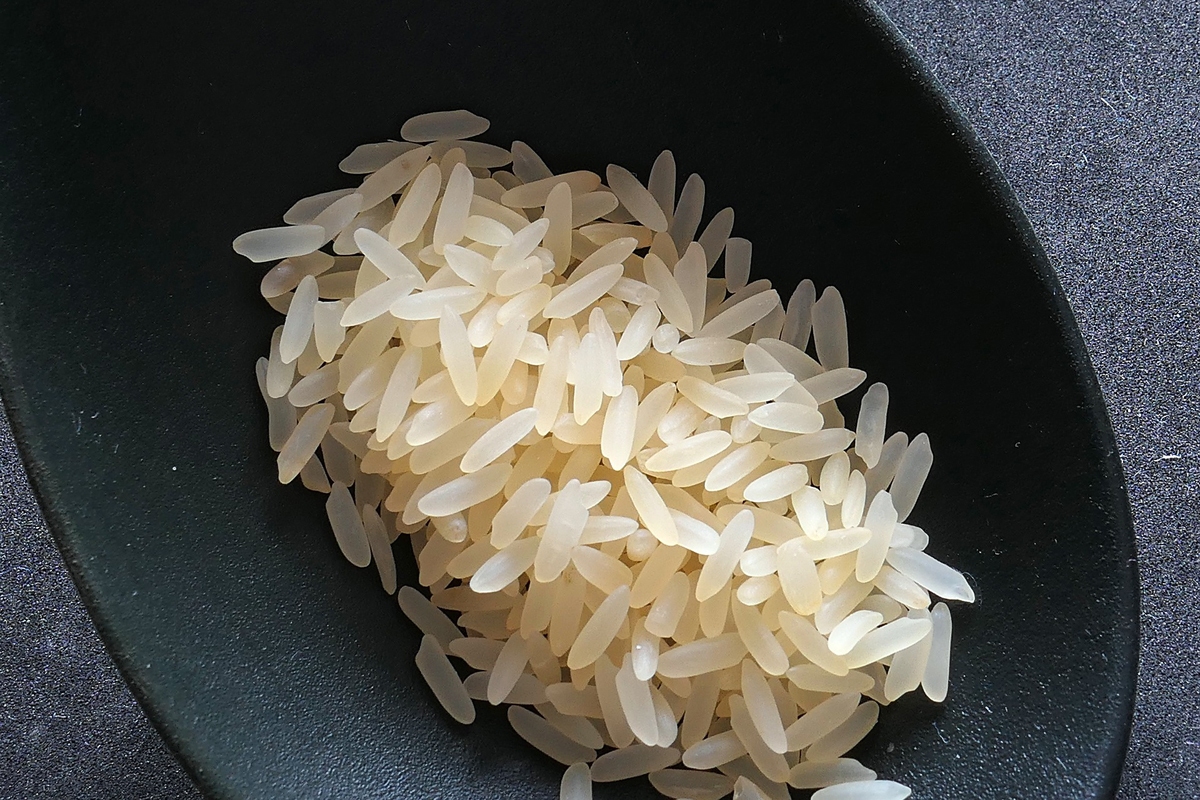Is Rice Gluten-Free?

Yes, all rice (in its natural form) is gluten-free.
Rice is one of the most popular gluten-free grains for people with celiac disease. Many gluten-free packaged goods are made with rice flour instead of wheat flour.
Although rice is naturally gluten-free, there are some instances where it may not be gluten-free. In addition to cross-contact (outlined below), rice can be made or sold with various spices and sauces that could contain gluten. Some names may be misleading as well. For example, rice pilaf may sound like it is gluten-free. However, it is typically made with orzo, which is not gluten-free. Always double-check ingredient labels to be sure that what you are eating is truly gluten-free. When in doubt, avoid the product or contact the manufacturer to get more information.
Rice and Cross-Contact
Even though rice is naturally gluten-free, it can come into contact with wheat, barley and rye during the growing, harvesting and manufacturing process. Whenever possible, be sure to buy rice that is labeled or certified gluten-free.
Avoid buying rice from bulk bins at the grocery store. Cross-contact can easily occur in the bulk bins if other shoppers use the same scoop for both gluten-free and gluten-containing grains.
If you’re eating rice in a restaurant, make sure there are no added ingredients that would make the rice no longer gluten-free. Check and see if the rice can be made in its own clean pan so cross-contact doesn’t happen while cooking. Get tips for dining away from home here.
Types of Rice
- Long-grain rice
- Sticky rice
- White long-grain rice
- Brown long-grain rice
- Jasmine
- Basmati
- Medium-grain
- Arborio
- Vialone nano
- Carnaroli
- Forbidden black rice
- Short-grain
- Glutinous rice / Sushi rice
- Bomba rice (paella)
- Brown short-grain rice
- Wild rice
- Whole grain
- Refined
Preparations
- Parboiled/converted (partially boiled and dried, retains more nutrients than regular white rice)
- Polished/Refined (husk, bran and germ removed, rice polished, cooks faster)
- Yellow rice (typically has saffron or turmeric)
- Instant rice
Is Glutinous Rice Gluten-Free?
Even Asian or sticky rice, also called “glutinous rice,” is gluten-free, despite its name. In this case, the “glutinous” term refers to the sticky nature of the rice and not the gluten protein found in wheat, barley and rye.
Rice Dishes
You can use rice in so many dishes it’s probably easier to ask what you can’t make with rice.
Pair rice with a protein and vegetable for a satisfying and nutritious meal—don’t forget to add a sauce or seasoning! Rice can be ground into a flour for baked goods, and it suitable for savory and sweet dishes. Here are a few specific dishes you can try making:
- Sweet rice
- Risotto
- Paella
- Jambalaya
- Arroz con leche
- Rice pudding
- Arancini
- Boudin balls
- Rice cakes
- Korean rice balls
Rice Pilaf—Potentially Dangerous Dish
Rice pilaf often contains orzo, which has wheat, therefore making this dish unsafe for people with celiac disease. Avoid ordering any rice pilaf in a restaurant unless the chef or wait staff can explicitly guarantee that there is no orzo or wheat in it, only rice.
Arsenic in Rice
There have been concerns about high arsenic contents in rice. Arsenic is a naturally occurring chemical that is found in nature, but consuming high levels of arsenic can be dangerous and unhealthy.
Arsenic in rice is usually only a concern for people with celiac disease and for Asian populations, because these groups tend to eat much more rice and rice-based products than those who eat wheat.
Studies are being conducted on the issue and Tricia Thompson, MS, RD has shared recommendations for people with celiac disease. Learn more. (Note: At the time this article about arsenic in rice was written, Beyond Celiac was known as the National Foundation for Celiac Awareness).
Although it isn’t a major concern for most patients, if you’d like to be cautious, try to buy rice imported from Asia, and avoid rice grown in the southern region of the United States of America.
Celiac Disease Symptoms after Eating Rice
If you have symptoms after eating rice, check the ingredients list and review how it was prepared. Was a gluten-containing ingredient added? Could cross-contact have occurred? Answering these questions will help you avoid gluten exposure in the future.
If your symptoms don’t go away, check in with your doctor for some advice. Your doctor can also test you to see if your gluten antibody levels are high. This will show if you are somehow eating gluten, though it cannot pinpoint when or how gluten got into your system. This test is the same blood test you received when first being tested for celiac disease. Learn more about celiac disease testing.
<< See more frequently asked questions about the gluten-free diet



